Welcome to the bright and cheerful world of yellow fruits! Nature has gifted us with a palette of sunshine-hued treasures that not only tantalize our taste buds but also pack a punch of nutritional goodness. From the familiar sweetness of bananas to the exotic allure of golden kiwis, these yellow delights bring colour and flavour to our tables.
In this journey through the spectrum of yellow fruit Names, we’ll explore the diverse tastes, textures, and health benefits that these golden wonders offer. Whether you’re a fan of the tangy burst from a yellow plum or the tropical sweetness of a mango, there’s something for everyone in this radiant array.
40 Fruits Names In English And Hindi
| Serial Number | Picture | English Fruits Name | Hindi Fruits Name |
| 1 | 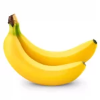 | Banana | केला |
| 2 |  | Mango | आम |
| 3 |  | Pineapple | अनानास |
| 4 |  | Lemon | नींबू |
| 5 | 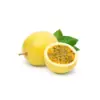 | Yellow Passion Fruit | पैशन फल |
| 6 | 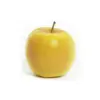 | Yellow Apple | पीला सेब |
| 7 |  | Yellow Plum | पीला आलूबुखारा |
| 8 |  | Yellow Watermelon | पीला तरबूज |
| 9 | 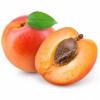 | Apricot | खूबानी |
| 10 | 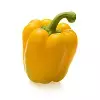 | Yellow Bell Pepper | पीला शिमला मिर्च |
| 11 | 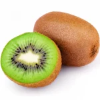 | Golden Kiwi | सुनहरा कीवी |
| 12 | 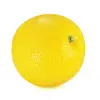 | Yellow Grapefruit | पीला चकोतरा |
| 13 | 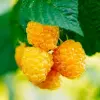 | Yellow Raspberry | पीला रेज़बेरी |
| 14 |  | Yellow Passionflower | पीला पैशनफ्लावर |
| 15 | 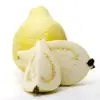 | Yellow Guava | पीला अमरूद |
| 16 | 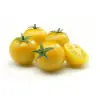 | Yellow Cherry | पीला चेरी |
| 17 | 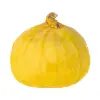 | Yellow Fig | पीला अंजीर |
| 18 | 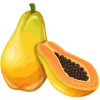 | Yellow Papaya | पीला पपीता |
| 19 |  | Yellow Grape | पीला अंगूर |
| 20 |  | Yellow Peach | पीला आड़ू |
| 21 | 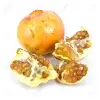 | Yellow Pomegranate | पीला अनार |
| 22 |  | Yellow Tomato | पीला टमाटर |
| 23 |  | Yellow Dates | पीला खजूर |
| 24 |  | Yellow Dragon Fruit | पीला ड्रैगन फ्रूट |
| 25 |  | Yellow Mulberry | पीला शहतूत |
| 26 | 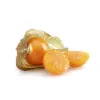 | Yellow Gooseberry | पीला आंवला |
| 27 | 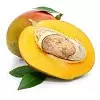 | Yellow Mango | पीला आम |
| 28 |  | Yellow Kiwi | पीला कीवी |
| 29 |  | Yellow Lychee | पीला लीची |
| 30 |  | Yellow Passion Fruit | पीला पैशन फ्रूट |
| 31 |  | Yellow Banana | पीला केला |
List Of Yellow Fruit Names And Their Benefits For Kids
here’s a list of yellow fruits and some of their potential benefits for kids:
1. Bananas:
- Benefits: Good source of potassium, vitamin C, vitamin B6, and dietary fibre. Provides energy and supports healthy digestion.
2. Pineapple:
- Benefits: Rich in vitamin C, manganese, and dietary fibre. Supports immune health and digestion.
3. Mango:
- Benefits: High in vitamin C, vitamin A, and fibre. Supports immune function, vision health, and digestion.
4. Papaya:
- Benefits: Contains vitamin C, vitamin A, folate, and digestive enzymes like papain. Supports digestion and immune health.
5. Lemon:
- Benefits: Excellent source of vitamin C. Supports immune health and aids in digestion.
6. Yellow Apples:
- Benefits: Provide fibre, vitamin C, and various antioxidants. Support digestion and overall health.
7. Yellow Plums:
- Benefits: Rich in vitamins A and C, as well as dietary fibre. Supports immune function and digestion.
8. Yellow Peaches:
- Benefits: Contains vitamins A and C, as well as dietary fibre. Supports skin health and digestion.
9. Yellow Watermelon:
- Benefits: Contains vitamins A and C, and hydrates the body. Provides a refreshing and nutritious snack.
10. Golden Kiwi:
- Benefits: High in vitamin C, vitamin K, and dietary fibre. Supports immune function and digestive health.
Easy And Effective Ways For Getting Your Kid To Eat
Getting kids to eat can sometimes be a challenge, but there are several strategies you can try to make mealtime more enjoyable and encourage healthy eating habits. Here are some easy and effective ways to get your kid to eat:
1. Make Food Fun:
- Create visually appealing meals by arranging food in creative shapes or using colourful ingredients.
- Use cookie cutters to make fun shapes out of sandwiches, fruits, or vegetables.
- Arrange food on the plate to resemble a smiley face or another fun design.
2. Involve Them in Cooking:
- Let your child help with simple tasks in the kitchen, such as washing vegetables, stirring ingredients, or setting the table.
- When kids are involved in the cooking process, they may be more interested in trying the final dish.
3. Offer a Variety of Foods:
- Introduce a variety of fruits, vegetables, proteins, and grains to expose your child to different flavours and textures.
- Rotate the types of foods you serve to keep meals interesting.
4. Set a Schedule:
- Establish a regular mealtime routine with a set meal and snack times. Consistency helps create a sense of structure and makes kids more receptive to eating.
5. Be a Role Model:
- Demonstrate healthy eating habits by incorporating a variety of nutritious foods into your meals.
- Kids often imitate the behaviour of adults, so seeing you enjoy healthy foods can influence their choices.
6. Limit Distractions:
- Create a calm and distraction-free environment during meals. Turn off the TV and minimize electronic devices to help your child focus on eating.
7. Let Them Choose:
- Allow your child to have some say in what they eat. Offer them choices within healthy options to give them a sense of control.
8. Make Snacks Count:
- Provide nutritious snacks, such as cut-up fruits, vegetables with dip, or yoghurt. This can help ensure your child gets the nutrients they need between meals.
9. Praise Positive Behaviour:
- Encourage your child when they try new foods or eat well. Positive reinforcement can create a positive association with mealtime.
10. Be Patient and Persistent:
- It may take time for children to develop a taste for certain foods. Be patient, and don’t be discouraged if they don’t immediately embrace new flavours.
Common Types of Yellow Fruits (With Pictures)
- Bananas: Easily recognizable, with a curved shape and bright yellow skin.
- Mangoes: Large, oval-shaped fruits with smooth skin that ranges in colour from green to yellow when ripe.
- Pineapples: Large tropical fruits with a spiky exterior and sweet, juicy yellow flesh.
- Lemons: Small, yellow citrus fruits with a sour taste and a thin, textured peel.
- Papayas: Large tropical fruits with orange-yellow flesh and a sweet taste.
- Yellow Apples: Varieties like Golden Delicious or Yellow Delicious have yellow or golden skin.
- Yellow Plums: Small, round fruits with smooth skin and a yellow to golden colour.
- Yellow Peaches: Round fruits with fuzzy skin that can range from pale yellow to deep golden.
- Yellow Watermelon: Similar to traditional watermelon but with a yellow or light orange interior.
- Golden Kiwi: Smaller and smoother than green kiwi, with brown, fuzzy skin and bright yellow flesh.
Tropical Yellow Fruits
- Mango: A tropical classic, mangoes are sweet and juicy, and come in various varieties, each with its unique flavour and texture.
- Pineapple: Known for its spiky exterior and sweet, tangy flavour, pineapples are a popular tropical fruit.
- Papaya: This tropical fruit has orange-yellow flesh, a sweet taste, and is rich in vitamins, especially vitamin C.
- Passion Fruit: While the exterior is often purple or yellow, the inner part of the fruit is typically yellow and filled with aromatic, seedy pulp.
- Golden Kiwi: A variant of the traditional green kiwi, the golden kiwi has smooth, brown, fuzzy skin and bright yellow flesh.
- Yellow Dragon Fruit (Pitaya): This exotic fruit has a yellow or white flesh speckled with tiny black seeds. It is mildly sweet and has a texture similar to kiwi.
- Guava: Guavas come in various colours, including yellow. They are sweet, and fragrant, and can be eaten fresh or used in juices and jams.
- Starfruit (Carambola): Star-shaped when sliced, starfruit is crisp and mildly sweet. It can be eaten fresh or added to salads and desserts.
- Yellow Passionfruit (Gulupa): Similar to purple passionfruit, the yellow variety is often smaller and has a unique, sweet-tart flavour.
- Soursop (Graviola): With a spiky green exterior, the inside of soursop is white and fibrous with a sweet and tangy taste.
Sweet Yellow Fruits
- Mango: Known for its sweet, juicy, and tropical flavour. There are various varieties, each with its unique taste and texture.
- Banana: Sweet and creamy, bananas are a popular and convenient snack.
- Pineapple: Sweet and tangy, pineapple is a tropical fruit with a refreshing taste.
- Papaya: Sweet and musky, papaya has orange-yellow flesh and is rich in vitamins.
- Golden Kiwi: Sweeter than its green counterpart, the golden kiwi has smooth, brown, fuzzy skin and bright yellow flesh.
- Yellow Watermelon: Similar in taste to red watermelon but with a sweeter, milder flavour.
- Yellow Plums: These plums have a sweet and slightly tart taste, and their smooth skin ranges from pale yellow to golden.
- Yellow Peaches: Sweet and juicy, yellow peaches have fuzzy skin and a vibrant yellow-orange colour.
- Starfruit (Carambola): Mildly sweet and slightly tangy, starfruit has a crisp texture and a unique star shape when sliced.
- Goldenberries (Physalis): Small and yellow, goldenberries have a sweet and tart flavour, often used in jams or eaten fresh.
Sour Yellow Fruits
- Lemon: Known for its strong sour taste, lemons are commonly used in cooking, baking, and beverages.
- Yellow Passionfruit: This tropical fruit has a sweet-tart flavour, with the yellow variety being slightly more acidic than the purple one.
- Starfruit (Carambola): While some varieties can be sweet, starfruit can also have a slightly tangy or tart taste.
- Sour Yellow Cherries: Some varieties of yellow cherries can be tart, providing a different flavour profile compared to their sweet counterparts.
- Sour Yellow Plums: Certain types of yellow plums can have a tart flavour, adding a refreshing twist to your fruit selection.
- Yellow Gooseberry: These small, translucent yellow berries have a tart taste and are often used in jams, desserts, or eaten fresh.
- Kumquat: These tiny citrus fruits have a sweet skin but a tart interior, providing a unique combination of flavours.
- Sour Yellow Guava: While guavas can be sweet, some varieties have a tartness that adds a zesty element to the fruit.
Yellow Citrus Fruits
- Lemon: Known for its tart flavour, lemons are versatile and used in a variety of culinary applications, from cooking to beverages.
- Yellow Lime: While green limes are more common, some varieties of limes, especially ripe ones, can take on a yellowish hue. Limes add a tangy flavour to dishes and drinks.
- Yellow Grapefruit: Grapefruits come in various colours, including yellow. They can range from sweet to tart, depending on the specific variety.
- Oranges (Navel and Valencia): Oranges are commonly associated with the colour orange, but some varieties, like the Navel and Valencia, can have a yellowish hue. They are sweet and juicy.
- Tangerine: Tangerines are small, citrus fruits with a sweet and tangy flavour. They are easy to peel and often enjoyed as a snack.
- Clementine: Similar to tangerines, clementines are sweet and easy to peel, making them a convenient and tasty snack.
- Mandarin Orange: These small, easy-to-peel oranges are sweet and often enjoyed fresh or in salads.
- Pomelo: The largest citrus fruit, pomelos have a thick yellow-green rind and sweet, mild flesh. They are similar to grapefruits but milder in flavour.
Conclusion
In conclusion, yellow fruits, whether sweet, sour, or citrus, offer a delightful spectrum of flavours and nutritional benefits. From the tropical sweetness of mangoes and bananas to the tartness of lemons and yellow passion fruit, these fruits contribute not only to our taste preferences but also to our overall health. Incorporating a variety of yellow fruits into our diets ensures a diverse range of vitamins, minerals, and antioxidants. Whether enjoyed on their own, in salads, or as part of flavorful dishes, these fruits bring both colour and vitality to our meals. So, the next time you reach for a yellow fruit, savour not only the taste but also the nutritional richness it brings to your plate.
FAQ’s
What makes yellow fruits different from other coloured fruits?
Yellow fruits get their colour from pigments like carotenoids and flavonoids. These pigments contribute not only to the fruit’s appearance but also to its nutritional content.
Are all yellow fruits sweet?
No, not all yellow fruits are sweet. While many are known for their sweetness, some, like lemons and yellow passionfruit, can be tart or sour.
What health benefits do yellow fruits provide?
Yellow fruits are rich in vitamins, particularly vitamin C, and other essential nutrients. They contribute to immune health, skin health, and overall well-being.
Which yellow fruits are good for boosting the immune system?
Fruits such as oranges, lemons, and mangoes are rich in vitamin C and known for their immune-boosting properties.
Can yellow fruits be included in weight loss diets?
Yes, many yellow fruits are low in calories and high in fibre, making them suitable for weight loss diets. Examples include yellow watermelon and yellow peppers.
What are some creative ways to incorporate yellow fruits into meals?
Yellow fruits can be added to salads, smoothies, desserts, and even savoury dishes for a burst of colour and flavour.
Do yellow fruits have any impact on skin health?
Yes, the vitamin C and antioxidants found in yellow fruits contribute to skin health by promoting collagen production and protecting against oxidative damage.
Are there any yellow fruits that are naturally low in sugar?
Yes, fruits like yellow peppers and lemons are relatively low in natural sugars compared to some other fruits.
Which yellow fruits are available year-round?
Some yellow fruits, such as bananas, lemons, and oranges, are typically available year-round in many regions.
Can yellow fruits be given to children?
Yes, many yellow fruits are kid-friendly and packed with essential nutrients. However, individual preferences may vary.
Are there any allergens commonly associated with yellow fruits?
Yellow fruits themselves are not common allergens, but individuals with pollen allergies may experience cross-reactivity with certain fruits like apples and peach
Are canned or frozen yellow fruits as nutritious as fresh ones?
While fresh fruits are generally preferred, canned and frozen varieties can still retain a significant amount of their nutritional value if processed properly.
Can yellow fruits be part of a diabetic-friendly diet?
Yes, several yellow fruits, such as berries and kiwi, have a lower glycemic index and can be included in moderation in a diabetic-friendly diet.
What are some exotic yellow fruits that may not be commonly found in local markets?
Exotic yellow fruits include yellow dragon fruit (pitaya), yellow passionfruit, and goldenberries, which may be available in speciality or international markets.

Balaji KVR, a passionate botanist and plant enthusiast with a strong academic background in plant biology. My journey at Botany Lane Greenhouse has been nothing short of exhilarating. Here, I delve deep into the world of plants, conducting extensive research, identifying unique species, and ensuring their optimal growth.
My expertise extends to propagation techniques, disease management, and meticulous plant care. I’m dedicated to creating the perfect environment for plants, focusing on maintaining precise conditions and utilizing innovative methods. Beyond my green endeavors, I actively engage in educational initiatives, workshops, and tours, aiming to foster a deeper understanding and love for the fascinating botanical realm.


